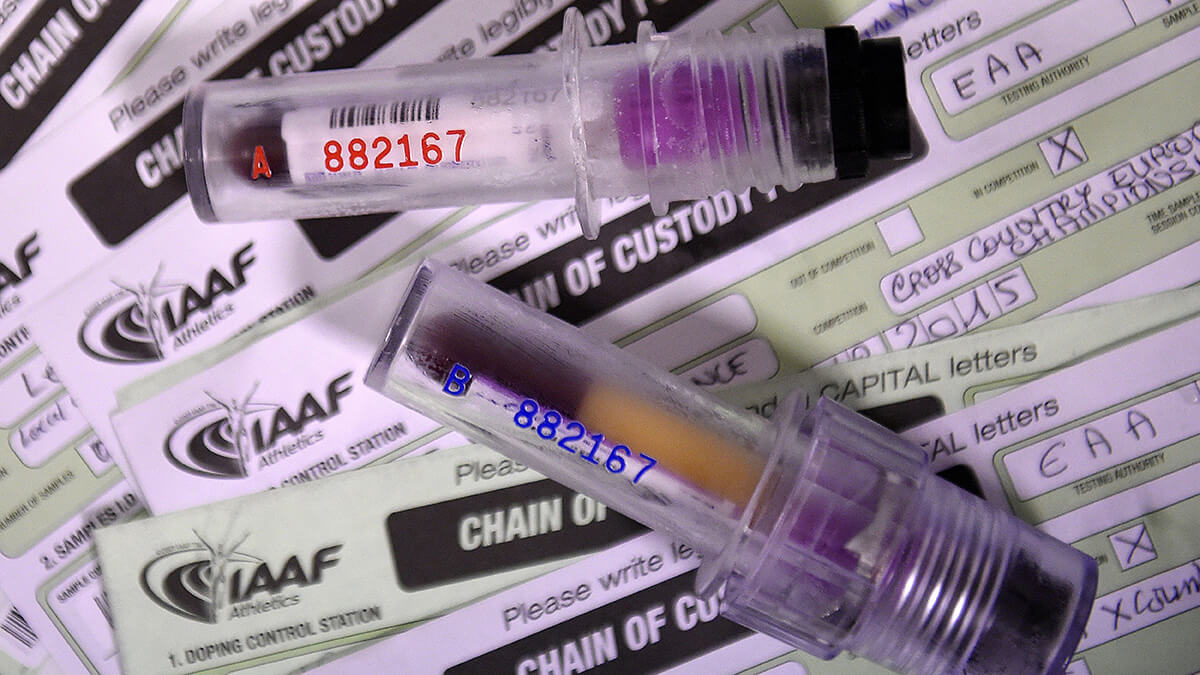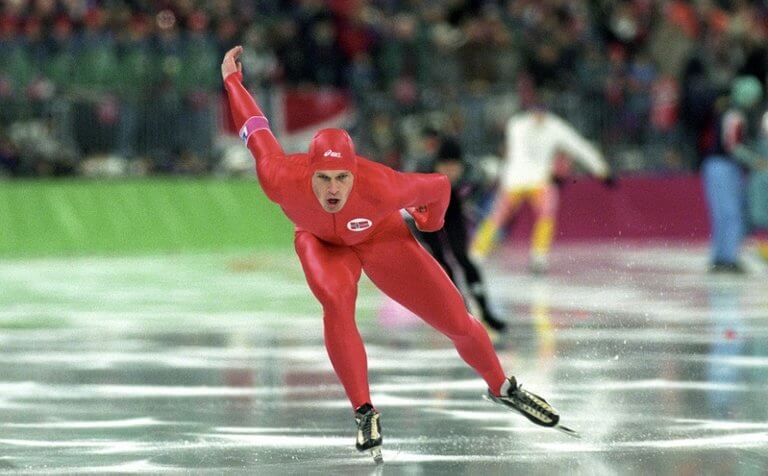In 2020, the Polish developer CD Projekt Red launched Cyberpunk 2077, a video game that pulled players in to a post-human world where the body is little more than a meat sack for housing an array of enhancement technologies. Among the many ways of “improving” your character, the game gives you the ability to manipulate your genetic makeup as you attempt to “re-evolve” the human form.
The world of Cyberpunk really gives you that feeling of being immersed into a sci-fi world akin to the likes of Bladerunner (1982) and Altered Carbon (2018). But the gene editing technologies you explore in games like Cyberpunk are becoming less removed from reality. In our fast techno-evolving world, we are seeing frequent transitions of science fiction into science fact, and the advent of CRISPR-Cas9 gene editing has brought us one giant leap towards being able to genetically enhance our abilities.

Although CRISPR’s transhumanist impact is the subject of almost daily headlines, one aspect of its revolutionary potential has not been as scrutinized: depending on how it’s regulated and its many potential rogue uses, gene editing could forever disrupt the competitive balance in sports. And it may be an issue as soon as this summer, if the Olympics are held in Japan as now planned.
Sports, doping and genes
Warriors and athletes have always looked for competitive advantages, as tiny benefits in competition often separated losers from winners (and survivors, in some cases). The advantage naturally went to those with faster reflexes or greater stamina or strength. But they changed, gradually at first, as we learned more and more about the human body. Training methods, diet, painkillers and surgery all played increased roles. But the real game-change came in the 1960s, with the surreptitious introduction of steroids entered the sporting scene, and the rise of the feared, and heavily doped, East German and Soviet bloc athletes (although many western athletes used performance enhancing drugs as well, just not on a state-level).
The worrying interface of genes and sports has been on the table of the future since 2000, when human genome was first mapped, accelerating the nascent genetics and biotechnology revolution. As Jon Entine wrote in Salon in 2002, The Coming of the Age of the Über-Athlete
“It is sport’s doomsday scenario: a new generation of bioengineered performance-enhancing agents that can transform also-rans into gold medalists. Imagine athletes injecting artificial genes right into their muscles — a virtually undetectable act that would give them the sinewy muscles of a cougar, or endurance like that of an antelope. But this is not the science fiction of Hollywood, like the movie “Gattaca,” or a long-lost chapter of H.G. Well’s 1904 pharmacological fantasy “The Food of the Gods,” about a superhuman race of young giants grown on drugs. This is the new reality in sports, and it is calling into question cherished beliefs about what is “natural” and “unnatural,” fair and unfair, in the world of elite athletics.”
The overriding concern, then and now, is that sophisticated gene-manipulating techniques could pave a new avenue for athletic doping, “undermining sports’ bedrock principle of fairness,” as Entine wrote almost two decades ago. We are far closer than you might think to a sprinter re-splicing her genes to make her run faster or a weightlifter engineering an increased strength. And in the coming age of the cyber-athlete, detection of genetic enhancement may be all but impossible.
How close is the threat?
CRISPR explained
Let’s talk about the most powerful tool in the potential cheater’s toolbox. CRISPR-Cas9 is one of the most flexible and inexpensive forms of gene editing that has opened the door to scientists, and even lay people, to the ability to manipulate gene sequences. It stands for Clustered Regularly Interspaced Short Palindromic Repeats and it gives researchers the ability to tweak the DNA sequences of genes and alter their functions.
The process involves generating a “new” genetic sequence and attaching it to a protein called Cas9 which scans DNA strands within the individual’s cells until it locates the target sequence. Typically, the Cas9 protein will then cut the DNA at the target gene and introduce the new sequence (a sequence to repair a faulty gene for example).

The frequently stated goal of CRISPR is to use the technology to snip genes to correct genetic disorders, treat diseases and improve crops, among its most cited uses. But the method brings considerable ethical concerns and is still not yet precise in many of its uses. It is, however, rapidly becoming a more powerful and improved tool as the benefits of large investment into the technology start to surface. Nowhere is this more evident than in the highly controversial use of CRISPR in the birth of two twins with edited genomes in China at the start of 2019.

Concerns about athlete doping
Gene doping (boosting athletic performance using banned substances or methods) has been a constant issue in athletics and other sports for decades. After fits and starts over many decades, a relatively rigorous system of checks and balances is in place to detect when an athlete is taking performance enhancing drugs. There is an array of tests that can be run on blood and urine to ensure an athlete is performing “clean”.

But current tests are designed to detect foreign substances and chemicals in an athlete’s bloodstream or urine. DNA is far from a foreign substance and is harder to probe for evidence of tampering. For example, unlike classic doping drugs such as steroids, bioengineered substances are chemically identical to the body’s natural hormones, making detection difficult at best. Gene editing adds additional layers of concerns. Doping using something like CRISPR guarantees that tests will be unable to detect when an athlete has attempted to give themselves a genetic advantage.
The prospect of just this fairness-shattering development has been on the radar for many years. “Genetic engineering is accelerating and it’s damaging sports,” warned Norwegian former speed skating champion Johann Olav Koss, who served in 2002 as an athletes’ representative to the International Olympic Committee’s World Anti-Doping Agency (WADA). “We can’t be naive. We have to be realistic. This is not only an issue for sport, it’s a broad ethical issue for human beings,” added Koss, who is also a physician.

The concern has only grown over the years as the genetic techniques have advanced. But it took until 2018 before WADA finally outlawed gene editing and added the technology to their list of prohibited substances and methods.
Real developments in gene doping
To date, there has not been an identified case of gene doping in athletics. This could potentially be due to an inability to screen for genetic manipulations in routine doping tests but it is more likely due to the shortfall in the precision of gene editing with CRISPR Cas9 technology. For a gene to be unzipped and altered, the insertion of the new gene has to be done with total accuracy otherwise the new sequence will not be incorporated into the subjects’ DNA and no effect will be seen.
CRISPR provides the possibility to rip out DNA and insert something new but it is a rather blunt tool for doing so and often results in a “mismatched” edit of the target gene. The story could stop here then if not for a recent “upgrade” in the form of a new CRISPR tool called prime editing. If a technology has potential but isn’t quite there yet, scientific research always endeavours to push it towards viability and prime editing represents just that.
Prime editing was developed by a team of researchers at Broad Institute at the Massachusetts Institute of Technology. It greatly improves the chances of achieving the exact genetic editing desired and increases the range of genetic changes that can be made. It works in a similar way to CRISPR Cas9 but it simplifies the process of unzipping the DNA and inserting the new genetic content. Additionally, prime editing employs a DNA-building enzyme called reverse transcriptase to help guide the integration of the new DNA sequence.
The hope is that this breakthrough will lead to CRISPR-based gene therapies for curing genetic disorders. It has certainly promoted excitement in the field but it also. Potentially. gives rise to a more reliable source of creating genetic enhancements for less noble reasons. Numerous calls for caution have been voiced but there are still research groups across the globe that are pushing ahead to try and turn this into a viable source of human genome editing. It is arguably only a matter of time before this type of technology trickles down into the world of sport and we need to be prepared for what it may bring.
Detecting gene doping
The ability to detect gene doping is perhaps our best weapon for fighting against a new era of performance enhancement in the world of athletics. This opinion is certainly shared by the World Anti-Doping Agency and the many scientific research groups striving to develop ways of detecting genetic manipulation in athletes.
After a great deal of effort, a breakthrough in the field came at the end of 2020. A group from the Center for Preventive Doping Research in Cologne, Germany published the first method for detecting CRISPR Cas9 gene editing in mice. It is a very intelligently designed technique and is a good example of finding a simple solution to a complex problem. Rather than trying to scan the entire genetic sequence of the mouse (an incredibly laborious task), the test scans for evidence of the presence of the Cas9 protein that is used to insert the DNA sequence. Cas9 was detected up to 8 hours post administration. This handy test provides a proof-of-concept for applying this method in an anti-doping capacity.

Olympic officials say they expect to have in place a “ground-breaking” method of using gene testing to identify blood-doping cheats months after they used a banned performance-enhancing such as EPO. But the test wouldn’t be sophisticated enough to nab gene cheats.
This leaves us with a final question: Should we actually try and stop gene manipulation in sports the first place? What’s the fairness argument considering genes are not ‘distributed’ through the human race fairly?
Since the dawn of the original Olympics in ancient Greece, it had been assumed that training and discipline were the heroic qualities most critical to athletic success. But research into population genetics and physiology has battered the myth that sports is a level playing field where athletes who work the hardest go on to glory. But that’s never been true. Access to training, better diets, and drugs are key. And the immutable fact is humans are not equally endowed.
How does gene therapy and gene editing change the equation? There are clear concerns from a state perspective, especially in countries leaning towards authoritarianism. The Olympics is perceived as a proxy for power and influence, which could drive surreptitious genome-doping programs.
But the view from the athlete’s perspective is potentially different. There is the argument that we are looking at this wrong and that athletes will always seek to use the most cutting- edge technology to give them an edge. And why should they be denied that opportunity? As Jon Entine wrote years ago, as the age of genetics in sports dawned:
“[W]hat is “natural” and “normal” — and why [should] those who benefited by a lucky throw of the genetic dice … not have to face equal genetic competition? Many newly developed drugs and therapies are identical to natural chemicals made by the body. What should be considered “normal” levels of such naturally occurring hormones? Since many great athletes are in effect an accumulation of favorable (for that sport) genetic mutations, at what point do we disallow certain athletes as being too far from the “genetic mainstream”?
It seems overwhelmingly likely that, whether we like it or not, many world-class athletes in the future will have “had their genes done” the way they now get their knees scoped — and no one will know. What can or should we do about that?”
Maybe one day a genetic manipulation will be viewed the same as the latest pair of graphene enhanced running shoes. As an audience we are captivated by record breaking moments in sports. How might we feel about witnessing a stellar, but enhanced athlete, run 100 metres in 4 seconds?
Sam Moxon, PhD, is currently a research fellow in the field of regenerative medicine. He is a freelance writer with an interest in the development of new technologies to enhance medical therapies. Follow him on Twitter @DrSamMoxon
This article previously ran on the GLP on March 23, 2021.































